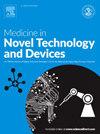A review of evaluation methods for Duchenne muscular dystrophy
Q3 Medicine
引用次数: 0
Abstract
In recent years, the study of body movement performance in disease assessment has attracted significant attention. Duchenne Muscular Dystrophy (DMD) is a disease that significantly affects mobility. It is crucial to assess the movement of both the upper and lower limbs to diagnose this condition effectively. This research categorizes DMD assessment methods into two types: human-based assessments (based on questionnaires) and Machine-based assessments (using motion tracking and computer algorithms). The validity of human-based assessments, which often focus on daily activities and muscle strength, may be called into question. This issue underscores the necessity of utilizing qualitative and observational methods to achieve more accurate assessments. In contrast, Machine-based assessment have benefited from recent technological advancements that enable innovative techniques for disease evaluation, thereby improving the accuracy and validity of DMD diagnosis. The integration of motion tracking systems with artificial intelligence algorithms mitigates the limitations of visual and subjective assessments, providing more precise and objective results. These advancements aim to enhance the accuracy, reliability, and validity of DMD diagnosis while offering a more comprehensive approach to assessing individuals with the condition. In this study, the existing assessment methods in both categories are introduced and compared, analyzing their advantages and limitations to provide an accurate evaluation of their performance in diagnosing DMD. The aim of this review is to identify the best methods for diagnosing and monitoring DMD based on accuracy, reliability, and efficiency.
杜氏肌营养不良症评价方法综述
近年来,身体运动表现在疾病评估中的研究引起了人们的极大关注。杜氏肌营养不良症(DMD)是一种严重影响运动能力的疾病。评估上肢和下肢的运动对有效诊断这种疾病至关重要。本研究将DMD评估方法分为两类:基于人的评估(基于问卷)和基于机器的评估(使用运动跟踪和计算机算法)。通常关注日常活动和肌肉力量的基于人的评估的有效性可能会受到质疑。这个问题强调必须利用定性和观察方法来进行更准确的评估。相比之下,基于机器的评估受益于最近的技术进步,这些进步使疾病评估的创新技术成为可能,从而提高了DMD诊断的准确性和有效性。运动跟踪系统与人工智能算法的集成减轻了视觉和主观评估的局限性,提供了更精确和客观的结果。这些进步旨在提高DMD诊断的准确性、可靠性和有效性,同时提供一种更全面的方法来评估患有这种疾病的个体。在本研究中,对两类现有的评估方法进行了介绍和比较,分析了它们的优点和局限性,以便准确评估它们在诊断DMD方面的性能。本综述的目的是在准确性、可靠性和效率的基础上确定诊断和监测DMD的最佳方法。
本文章由计算机程序翻译,如有差异,请以英文原文为准。
求助全文
约1分钟内获得全文
求助全文
来源期刊

Medicine in Novel Technology and Devices
Medicine-Medicine (miscellaneous)
CiteScore
3.00
自引率
0.00%
发文量
74
审稿时长
64 days
 求助内容:
求助内容: 应助结果提醒方式:
应助结果提醒方式:


